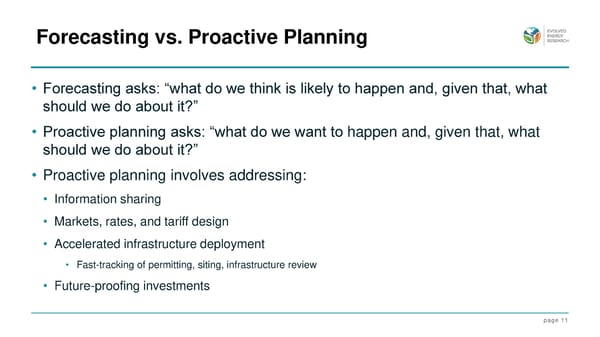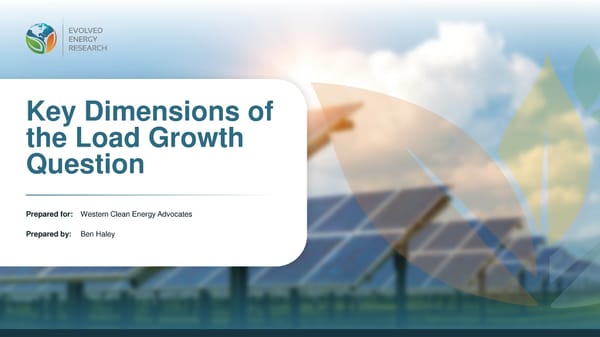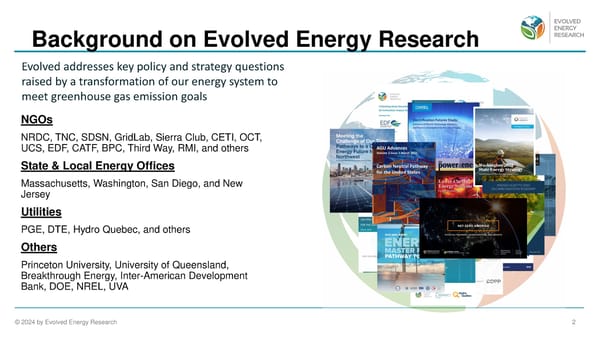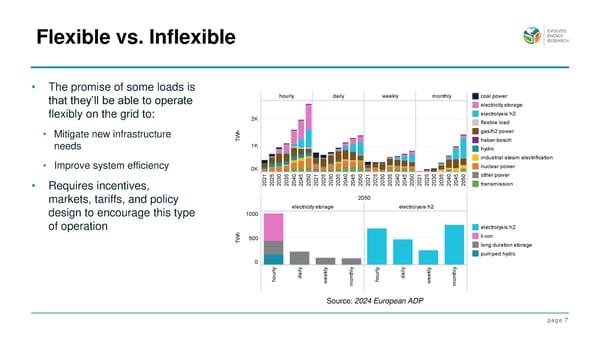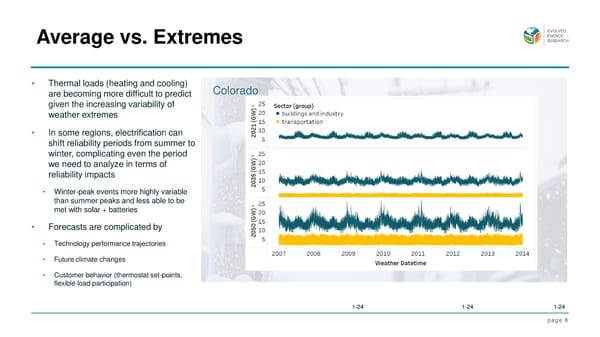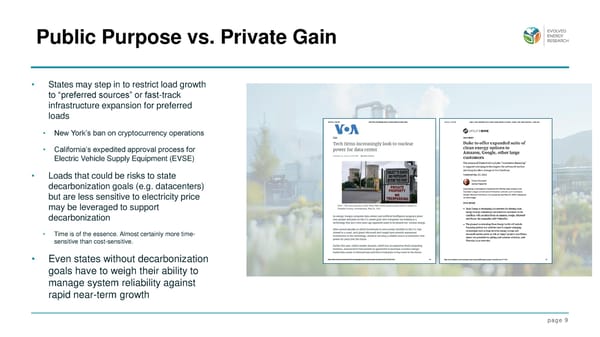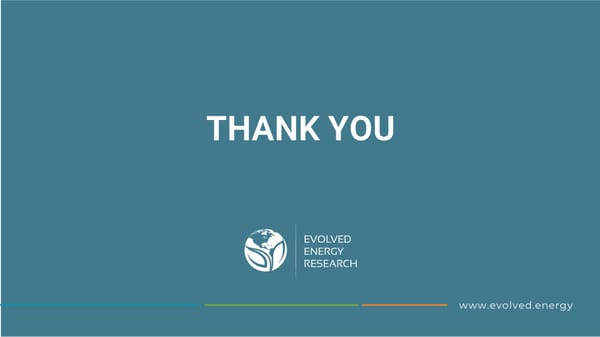Key Dimensions of the Load Growth Question
An analysis prepared by Evolved Energy Research for Western Clean Energy Advocates, focusing on various aspects influencing load growth.
Key Dimensions of the Load Growth Question Prepared for: Western Clean Energy Advocates Prepared by: Ben Haley
2024 by Evolved Energy Research 2 Evolved addresses key policy and strategy questions raised by a transformation of our energy system to meet greenhouse gas emission goals Background on Evolved Energy Research NGOs NRDC, TNC, SDSN, GridLab , Sierra Club, CETI, OCT, UCS, EDF, CATF, BPC, Third Way, RMI, and others State & Local Energy Offices Massachusetts, Washington, San Diego, and New Jersey Utilities PGE, DTE, Hydro Quebec, and others Others Princeton University, University of Queensland, Breakthrough Energy, Inter - American Development Bank, DOE, NREL, UVA
p a g e 3 Our U.S. Annual Decarbonization Perspective is the foundation of our load forecasting. We produce hourly representations of electrification futures at the state and utility - service territory under a variety of weather conditions. These are currently in use by NREL for their electricity planning analyses along with a variety of ISO/RTOs. Evolveds Load Forecasting Efforts Source: 2024 U.S. Annual Decarbonization Perspective
Key Dimensions 1 Bottom - Up vs. Top - Down Forecasting 2 Large Loads vs. Small Loads 3 Flexible vs. Inflexible 4 Average vs. Extremes 5 Public Purpose vs. Private Gain 6 High Load - Growth vs. Low Load - Growth Environment 7 Forecasting vs. Proactive Planning
p a g e 5 Predominance of new loads contributing to growth, that is electricity demand from end - uses that dont currently have a substantial electricity demand footprint. Examples include: Passenger EVs Freight EVs Heat pumps Datacenters H 2 Electrolysis New Manufacturing New loads are more difficult to accommodate in traditional econometric load forecast modeling New loads are definitionally outside the modeled relationships between load and economic variables. Requires bottom - up fundamentals approach Bottom Up vs. Top - Down Load Forecasting
p a g e 6 Large Loads vs. Small Loads Fundamental planning difference between forecasting 500MW of new demand from ~75k EVs vs. one new datacenter Generation and load planning for these large loads really needs to happen concurrently, in integrated processes Large - load timelines challenge electric sector capacity to deploy new infrastructure Requests do not equal commitments Example Datacenter Growth Forecast HG Scenario MG Scenario LG Scenario YR Demand Growth (GW)
p a g e 7 Flexible vs. Inflexible The promise of some loads is that theyll be able to operate flexibly on the grid to: Mitigate new infrastructure needs Improve system efficiency Requires incentives, markets, tariffs, and policy design to encourage this type of operation Source: 2024 European ADP
p a g e 8 Average vs. Extremes Thermal loads (heating and cooling) are becoming more difficult to predict given the increasing variability of weather extremes In some regions, electrification can shift reliability periods from summer to winter, complicating even the period we need to analyze in terms of reliability impacts Winter - peak events more highly variable than summer peaks and less able to be met with solar + batteries Forecasts are complicated by Technology performance trajectories Future climate changes Customer behavior (thermostat set - points, flexible load participation) Colorado 1 - 24 1 - 24 1 - 24
p a g e 9 Public Purpose vs. Private Gain States may step in to restrict load growth to preferred sources or fast - track infrastructure expansion for preferred loads New Yorks ban on cryptocurrency operations Californias expedited approval process for Electric Vehicle Supply Equipment (EVSE) Loads that could be risks to state decarbonization goals ( e.g. datacenters) but are less sensitive to electricity price may be leveraged to support decarbonization Time is of the essence. Almost certainly more time - sensitive than cost - sensitive. Even states without decarbonization goals have to weigh their ability to manage system reliability against rapid near - term growth
p a g e 1 0 High vs. Low Load Growth Environments What changes moving for a low - load growth a high - load growth environment? Symmetric risk Rationing new electric service New frontiers of utility competition Rate and reliability consequences Source: Grid Strategies: The Era of Flat Power Demand is Over

p a g e 1 1 Forecasting asks: what do we think is likely to happen and, given that, what should we do about it? Proactive planning asks: what do we want to happen and, given that, what should we do about it? Proactive planning involves addressing: Information sharing Markets, rates, and tariff design Accelerated infrastructure deployment Fast - tracking of permitting, siting, infrastructure review Future - proofing investments Forecasting vs. Proactive Planning
